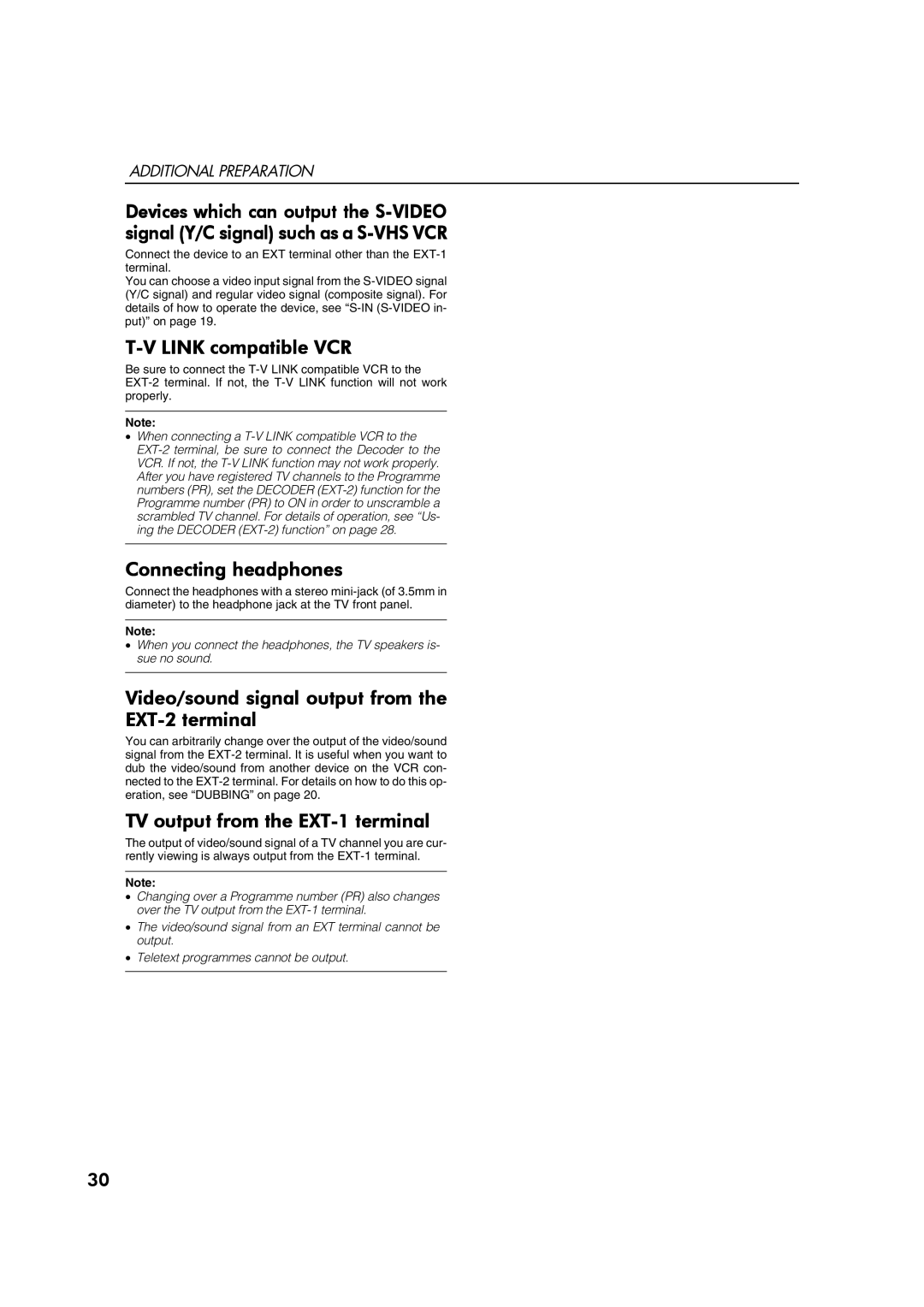ADDITIONAL PREPARATION
Devices which can output the S-VIDEO signal (Y/C signal) such as a S-VHS VCR
Connect the device to an EXT terminal other than the EXT-1 terminal.
You can choose a video input signal from the S-VIDEO signal (Y/C signal) and regular video signal (composite signal). For details of how to operate the device, see “S-IN (S-VIDEO in- put)” on page 19.
T-V LINK compatible VCR
Be sure to connect the T-V LINK compatible VCR to the EXT-2 terminal. If not, the T-V LINK function will not work properly.
Note:
•When connecting a T-V LINK compatible VCR to the EXT-2 terminal, be sure to connect the Decoder to the VCR. If not, the T-V LINK function may not work properly. After you have registered TV channels to the Programme numbers (PR), set the DECODER (EXT-2) function for the Programme number (PR) to ON in order to unscramble a scrambled TV channel. For details of operation, see “Us- ing the DECODER (EXT-2) function” on page 28.
Connecting headphones
Connect the headphones with a stereo mini-jack (of 3.5mm in diameter) to the headphone jack at the TV front panel.
Note:
•When you connect the headphones, the TV speakers is- sue no sound.
Video/sound signal output from the EXT-2 terminal
You can arbitrarily change over the output of the video/sound signal from the EXT-2 terminal. It is useful when you want to dub the video/sound from another device on the VCR con- nected to the EXT-2 terminal. For details on how to do this op- eration, see “DUBBING” on page 20.
TV output from the EXT-1 terminal
The output of video/sound signal of a TV channel you are cur- rently viewing is always output from the EXT-1 terminal.
Note:
•Changing over a Programme number (PR) also changes over the TV output from the EXT-1 terminal.
•The video/sound signal from an EXT terminal cannot be output.
•Teletext programmes cannot be output.

